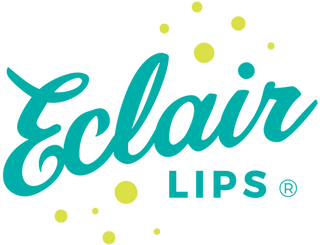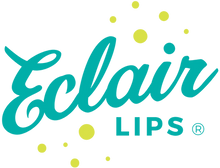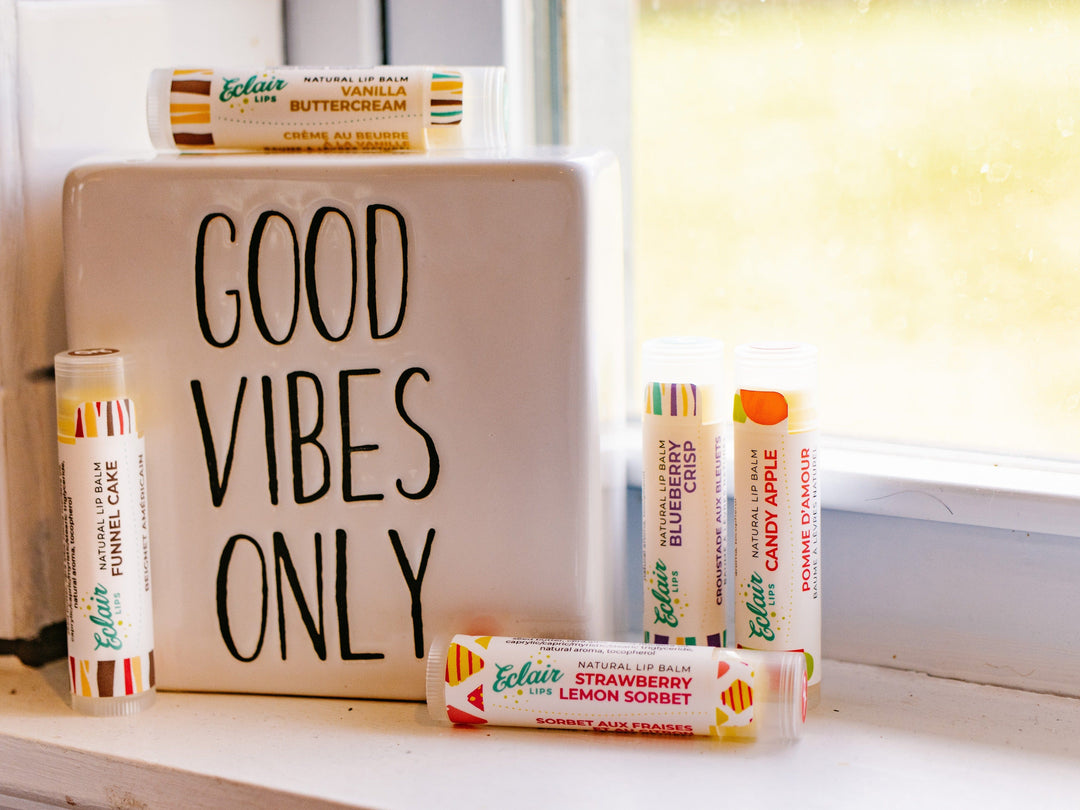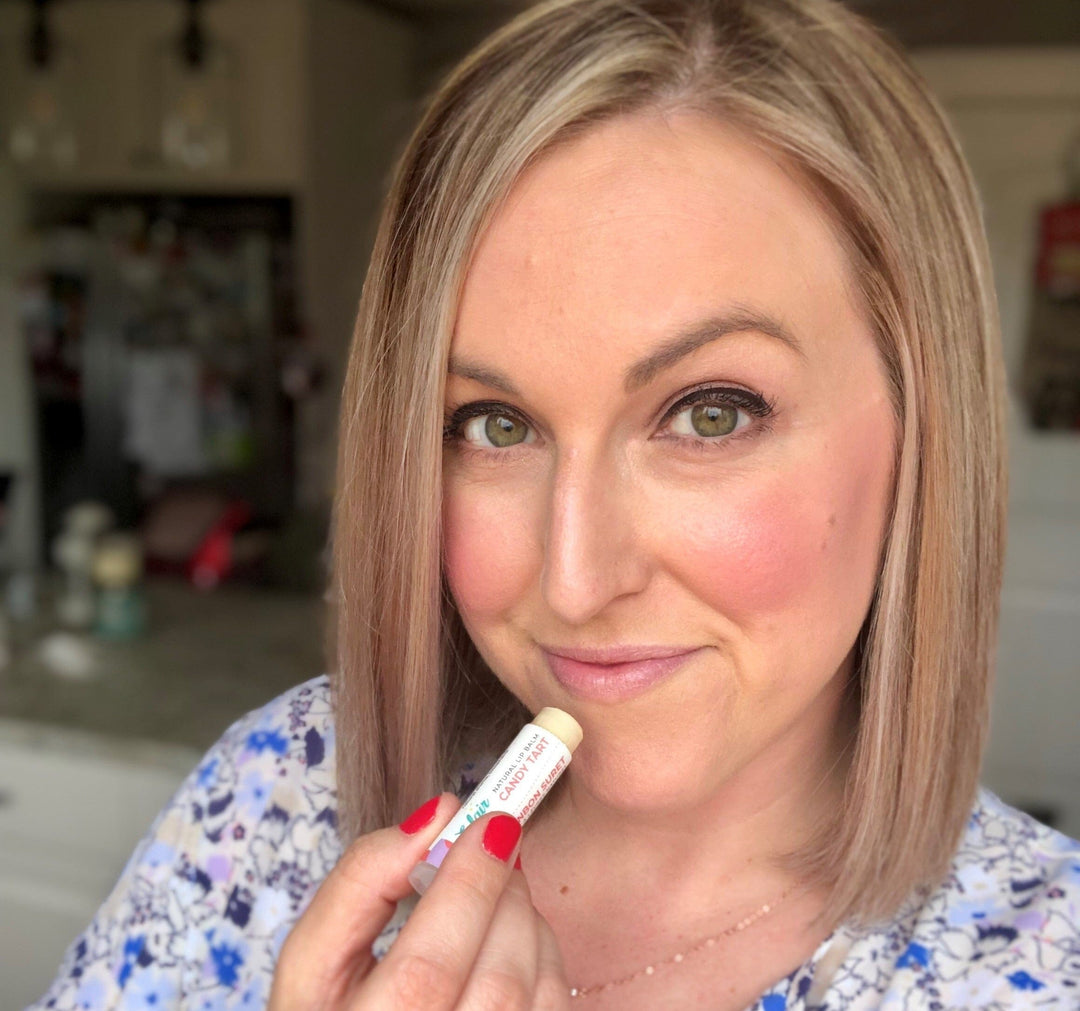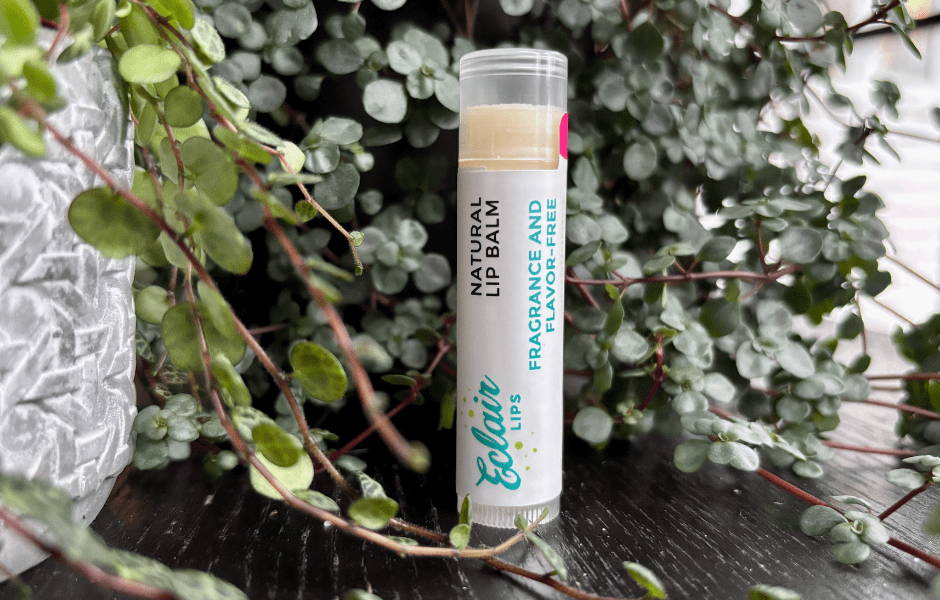Lip Oil vs Lip Balm: What's the Real Difference?
Choosing Between Lip Oil and Lip Balm for Your Lips
Lip oil vs lip balm; what on earth is the difference? Both products promise to keep your lips comfortable, but they actually work in pretty different ways. Lip oils have been showing up everywhere lately (thanks, TikTok beauty trends), while lip balm has been the reliable standby for decades. So what's the actual difference, and which one deserves a spot in your bag?
The short answer is that lip oil and lip balm serve different purposes, and honestly, you might end up wanting both. Lip balm is built for protection and long-lasting moisture with waxes and butters that create a barrier on your lips. Lip oil is lighter, shinier, and more about immediate hydration with a glossy finish. Think of balm as your winter coat and oil as your light jacket for a spring day.

Quick Takeaway
- Lip balm uses waxes, butters, and oils to create a protective barrier that locks in moisture and lasts for hours.
- Lip oil is a lightweight, oil-based product that provides shine and light hydration but wears off faster than balm.
- For dry or chapped lips, balm wins because it creates a stronger moisture seal with ingredients like beeswax.
- For a glossy finish, lip oil delivers more shine and a lighter feel, making it great for layering over other products.
Contents
What Exactly Is Lip Balm?
Lip balm has been around since the 1880s, and the formula hasn't changed dramatically because it works. A good lip balm combines three types of ingredients: waxes (like beeswax or candelilla wax), butters (like shea or cocoa butter), and oils (like coconut or jojoba oil). The wax gives the balm structure and helps it stay solid in the tube, while the butters and oils provide the moisturising power.
The magic of lip balm is in that protective barrier. When you apply balm, the waxes create a seal over your lips that locks in your natural moisture and shields against wind, cold, and dry air. Research on lip care shows that this occlusive layer is what makes balm so effective for preventing and soothing dryness.
Balm textures can vary quite a bit depending on the wax-to-oil ratio. A firmer balm (with more wax) will feel more solid and last longer on your lips, but might require a bit more pressure to apply. A softer balm (with more oils and butters) will glide on easily and feel creamier, but you might need to reapply more often. Most well-formulated balms aim for that middle ground where you get smooth application without sacrificing staying power.

What Exactly Is Lip Oil?
Lip oil is the newer kid on the beauty block, though the concept isn't totally new (people have been dabbing plain oils on their lips for ages). Modern lip oils are typically a blend of nourishing oils packaged in a tube or pot with an applicator. You'll often see ingredients like jojoba oil, rosehip oil, vitamin E oil, and sometimes lighter oils like sweet almond or grapeseed oil.
The key difference is that lip oils don't contain waxes or significant amounts of butter. They're mostly just oils, which means they're much lighter and more fluid than balm. This gives them that glossy, almost wet-looking finish that's become so popular. Some lip oils include a tiny bit of wax or thickener to help them cling to your lips better, but they're still predominantly oil-based.
Lip oils absorb into your lips more quickly than balm because there's no waxy barrier sitting on top. This can feel really nice (especially if you don't like the feeling of product on your lips), but it also means you'll probably need to reapply more frequently. Think of it as the difference between a rich hand cream and a fast-absorbing hand lotion.
The Lip Balm vs Lip Oil Breakdown: How They Compare
Let's talk about the practical differences you'll actually notice when using these products.
Texture and Feel
Balm has that classic smooth, creamy feel. It sits on your lips with a bit of weight to it. When you run your tongue over balmed lips, you can usually feel a slight layer of product there. Some people love this because it's like wearing a cozy blanket for your lips. Others find it a bit heavy, especially if they're not used to it.
Lip oil feels almost weightless by comparison. It's slick and glossy when you first apply it, but then it soaks in and your lips just feel… moisturised. There's less of that "product sitting on my lips" sensation. If you've ever applied a facial oil, lip oil feels similar but specifically formulated for your lips.
Protection and Longevity
This is where balm really shines (or doesn't shine, actually, since most balms have a more matte or satin finish). The wax content in balm creates a physical barrier that protects your lips from environmental stressors. Standing outside in January wind? Balm acts like a shield. Working in an air-conditioned office with dry air? Balm helps prevent moisture loss throughout the day.
Dermatological research on lip care emphasizes that occlusive ingredients (like the waxes in balm) are key for preventing transepidermal water loss. Your lips don't have oil glands of their own, so they rely on external moisture and protection more than other parts of your skin. Balm's occlusive nature makes it better suited for this protective role.
Lip oil, on the other hand, provides hydration but less protection. It can definitely make dry lips feel better in the moment, but without that waxy barrier, it won't lock in moisture as effectively. You might find yourself reapplying lip oil every hour or two, while a good balm can last 3-4 hours or longer.
Shine and Appearance
If you want shine, lip oil is your answer. It gives you that juicy, glossy look similar to lip gloss but without feeling as sticky. Many people use lip oil as a hybrid between lip care and makeup because it adds a healthy sheen while also moisturising.
Balm typically has a more subtle finish. Some balms (especially those with castor oil) can have a bit of shine, but most give you a natural or slightly satin look. If you prefer a "my lips but better" vibe without obvious shine, balm fits that better. And if you're someone who finds glossy products annoying because they catch your hair or feel sticky, balm won't have those issues.

When to Choose Lip Balm
Balm is your go-to in situations where your lips need serious protection or are already dealing with dryness. Here's when balm is the better choice:
Winter weather and harsh conditions. If you're dealing with cold, wind, or very dry air, you want that protective barrier. A good protective balm before you head outside can make a huge difference in how your lips feel by the end of the day.
Overnight lip care. Applying a rich balm before bed gives your lips hours of uninterrupted moisture sealing. You'll wake up with softer lips instead of that tight, uncomfortable feeling.
Actually chapped or sore lips. When your lips are already dry, flaky, or uncomfortable, balm is what will help soothe them. The combination of oils and butters moisturises while the waxes protect the healing skin. If your lips are particularly sensitive, a fragrance-free option works well since there are no added scents that might irritate.
Long gaps between reapplication. If you're going to be in a situation where you can't easily reapply (long meetings, outdoor activities, sleeping), balm's staying power is what you need.
Under lipstick or other lip makeup. Many people swear by applying a thin layer of balm before lipstick. It creates a smooth base and prevents the colour from settling into any dry patches. Just give it a minute to sink in before applying colour on top.
When to Choose Lip Oil
Lip oil works best in situations where you want light moisture and shine without the weight of a traditional balm. Here's when oil makes more sense:
As a glossy topcoat. If you're wearing lip colour (lipstick, tinted balm, lip liner), you can dab a bit of lip oil on top for extra shine and dimension. It's like adding a clear gloss but with some moisturising benefits.
Hot or humid weather. In summer heat, heavy balm can feel like too much. Lip oil is lighter and won't feel like it's melting off your face. It also won't leave that slightly waxy finish that can happen with balm in very warm conditions.
Throughout the day for maintenance. If your lips are generally healthy and just need a moisture boost here and there, lip oil is perfect for touch-ups. It feels refreshing and light, which is nice when you don't want to layer on more product.
For a natural glossy look. If you like the look of glossy lips but don't want to commit to full-on lip gloss (which can be sticky and thick), lip oil gives you that shine in a more wearable, comfortable way.
After exfoliating. If you've just used an exfoliating balm to buff away flakes, following up with a light oil can feel soothing without overwhelming freshly smoothed lips.

Can You Use Both? (Spoiler: Yes)
You absolutely can use both lip oil and lip balm, and lots of people do. They're not competing products; they're complementary. Here's how you might layer them:
Balm first, oil on top. Apply your protective balm as a base layer, then add a light layer of oil for shine. This gives you the protection of balm with the glossy finish of oil. It's especially nice for evening or when you want your lips to look a bit more done-up.
Different times of day. Use balm in the morning and before bed when you need that long-lasting protection, and keep oil in your bag for midday touch-ups when you want a quick moisture boost and shine refresh.
Different seasons. Many people switch to balm in winter when protection is crucial, then use oil more in spring and summer when lighter products feel better.
Different purposes. Keep balm for actual lip care and treating dryness, and use oil more as a cosmetic product when you want the glossy look.
The key is understanding what each product does well and using them accordingly. There's no rule that says you have to pick just one.
Lip Oil vs Lip Gloss: Wait, Aren't They the Same?
Not quite, though they're cousins. Lip gloss is primarily a cosmetic product designed to make lips look shiny and sometimes add colour. Traditional glosses are often petroleum-based or silicone-based with very little actual moisturising benefit. They sit on top of your lips and create that wet, reflective look, but they don't really hydrate or nourish.
Lip oil is more about actually caring for your lips while also providing shine. The oils in a lip oil (jojoba, rosehip, vitamin E) have moisturising and nourishing properties. They're not just creating a visual effect - they're providing some actual benefit to the skin on your lips.
That said, lip oils do share some characteristics with gloss. Both are liquid or semi-liquid, both provide shine, and both need more frequent reapplication than balm. Some brands are starting to blur the lines between oil and gloss, creating hybrid products that combine the nourishing oils with the intense shine of traditional gloss.
If you're trying to decide between oil and gloss, think about your priority. Want maximum shine and don't care as much about actual lip care? Gloss works. Want shine but also want your lips to actually feel better? Oil is the better choice.
The Ingredient Deep Dive: What's Actually Inside
Understanding what's in these products helps you make better choices. Let's break down the key ingredients you'll see.
Balm Ingredients
Waxes (beeswax, candelilla wax, carnauba wax) provide the structure and occlusive barrier. Beeswax is the most common and creates a nice protective layer without feeling too heavy. Candelilla wax (vegan alternative) is slightly glossier than beeswax. Research on lip balm formulation shows that wax content typically ranges from 15-25% for a balanced texture.
Butters (shea butter, cocoa butter, mango butter) add creaminess and deep moisture. These ingredients melt at body temperature, so they feel smooth and luxurious on lips. Shea butter is especially popular because it's gentle and deeply moisturising.
Oils (coconut oil, jojoba oil, sweet almond oil) provide slip and hydration. Different oils have different properties: coconut oil is very moisturising but solid at room temperature, jojoba oil is liquid and closely mimics skin's natural oils, sweet almond oil is light and easily absorbed.
Oil Ingredients
Carrier oils make up the bulk of lip oils. Jojoba oil is popular because it's stable and non-comedogenic. Rosehip oil contains vitamins and fatty acids. Sweet almond oil is light and slightly sweet-scented. Grapeseed oil absorbs quickly.
Vitamin E shows up in many lip oils both as an antioxidant to preserve the oil and as a beneficial ingredient for lips.
Light thickeners (minimal wax or a bit of castor oil) might be added to help the oil cling to lips better without making it feel like a balm.
Flavour/fragrance oils are sometimes added for scent, though many oils are unflavoured to keep them simple and gentle.

What About Tinted Options?
Both balms and oils can come in tinted versions, though they work differently.
Tinted balms combine moisture protection with a sheer wash of colour. They're great for everyday wear when you want something more than plain balm but less than full lipstick. The colour tends to be buildable but subtle, and you get all the protective benefits of balm plus a bit of colour. Try a tinted option for an easy pop of colour with moisture.
Tinted oils give you shine and a sheer colour tint. The colour is usually very sheer since oils are transparent by nature. These are perfect for a glossy, natural look with just a hint of colour.
If you want colour that lasts and actually protects your lips, tinted balm is the better choice. If you want a glossy, juicy look with very light colour, tinted oil works well.
Making Your Choice: A Quick Comparison
Here's a side-by-side look at the key differences:
| Feature | Lip Balm | Lip Oil |
|---|---|---|
| Main Ingredients | Waxes, butters, oils | Primarily oils with minimal wax |
| Texture | Solid or semi-solid, creamy | Liquid, lightweight |
| Finish | Matte to satin, subtle | Glossy, shiny |
| Protection Level | High - creates barrier | Moderate - provides moisture |
| Longevity | 3-4 hours or more | 1-2 hours typically |
| Best For | Dry/chapped lips, winter, protection | Glossy look, light moisture, layering |
| Feel on Lips | Noticeable layer, cushiony | Almost weightless, soaks in |
| Reapplication | Less frequent | More frequent |
Common Questions About Lip Oil and Lip Balm
Which one is better for really dry lips?
Balm wins for dry lips because it creates that protective seal. If your lips are uncomfortable or flaky, you want the waxes and butters in balm to lock in moisture and shield against further drying. Lip oil can feel nice on dry lips, but without the occlusive properties, it won't solve the underlying dryness problem as effectively.
Can I use lip oil at night?
You can, but balm is usually a better choice for overnight treatment. Your lips need several hours of protection while you sleep (and while you're breathing through your mouth or in dry bedroom air). A rich balm will stay put and keep working all night, while oil might absorb or wear off more quickly.
Is lip oil worth the hype?
If you like the glossy look and prefer lightweight products, yes. Lip oil delivers on the promise of shine plus some moisture benefits. It's not a miracle product, but it's a nice option for people who find balm too heavy or who want that dewy, glossy finish without sticky gloss.
Can I wear lip oil under lipstick?
You can, but you'll need to blot it first. Oil under lipstick can cause the colour to slip around or not adhere properly. If you want moisture under lipstick, a thin layer of balm that's been absorbed for a minute works better.
Do I need both in my routine?
Not necessarily, but having both gives you options. If you're happy with just balm, stick with that. If you want the flexibility to have both protective moisture and glossy shine depending on the day, having both makes sense.
Will lip oil make my lips dependent on it?
No, the "chapstick addiction" myth applies to irritating ingredients in some products, not to using lip care regularly. Using lip oil (or balm) frequently just means your lips are getting consistent moisture. If a product has irritating ingredients like menthol or camphor, that could cause a cycle of dryness, but plain oils won't cause dependence.

Are lip oils better for sensitive lips?
It depends on the specific product. Lip oils with minimal ingredients and no added fragrance can be gentle on sensitive lips. However, a simple, fragrance-free balm is often the safest bet for truly sensitive skin because the formulation is tried-and-true. Check ingredient lists for potential irritants or allergens regardless of whether you're choosing oil or balm.
Which lasts longer on the lips?
Balm, hands down. The wax content helps it stay put for hours. Research on lip balm formulation shows that higher wax content increases longevity because the product doesn't absorb as quickly and creates a more stable layer on the lips. Lip oil absorbs much faster, so you'll likely reapply more often.
The Bottom Line on Lip Oil vs Lip Balm
Both lip oil and lip balm have their place in lip care, and neither is objectively better than the other. It comes down to what you need in the moment and what you prefer.
Choose balm when protection, longevity, and treating dry lips are your priorities. Choose oil when you want lightweight moisture and a glossy finish. Use both if you want the flexibility to switch based on weather, occasion, or how your lips are feeling.
The most important thing is finding products that work for your lips and actually using them. Whether that's a reliable balm, a glossy oil, or both tucked in your bag, consistent lip care is what keeps your lips comfortable and healthy looking through every season.

More Lip Balm Guides
- Lip Moisturizer vs Lip Balm: What's the Actual Difference?
- Lip Tint vs Lipstick: Which One Should You Actually Reach For?
- Lip Oil vs Lip Balm: What's the Real Difference?
- Lip Tint vs Lip Stain: What's Actually Different (And Which One You Need)
- Lip Balm vs ChapStick: What's Actually Different?
- Lip Care Products Explained: Build a Routine That Actually Works for Your Needs
- Best Hydrating Lip Balm: What Actually Keeps Lips Comfortable All Day
- Best Ingredients for Lip Balm: What Actually Makes the Difference
- Best Natural Lip Balm: How to Choose the Right One for Your Lips
- Best Lip Balm for Winter: Survive the Cold Without the Cracks
Explore Our Online Lip Balm Shop
At Eclair Lips, we believe the best lip balm is the one you love to use every day. Every balm is handmade in small batches with natural ingredients, playful dessert-inspired flavours, and a texture we obsessed over until it felt just right. We ship anywhere in Canada and the US, so whether you are in Toronto, Halifax, Las Vegas, or Chicago, you can stock up on your favourite lip balm Canada style, right from your couch.
In our shop, you will find tinted lip balm for a hint of colour, fragrance free balm if your lips are on the sensitive side, gentle lip scrubs to keep everything smooth, and even lip balm for kids when you want something safe and fun to share. Looking for variety? Try a lip balm set to explore new flavoured lip balm favourites or to give as a gift.
Our brand is built on honesty, humour, and heart, and that means no scare tactics, no overblown claims, just lip care that feels good and makes you smile.
Take a peek at our collections here: https://eclairlips.com.
Disclaimer: The information in this post is meant to be helpful, and while we love dorking out about lip balm, it isn't medical advice. Everyone's needs are different, so if you have concerns about allergies, sensitivities, pregnancy, or a medical condition, please check with a healthcare professional before trying new products.
